CS REU Mentors and Projects
Quick Links
- Apply here on NSF ETAP
- Back to the HMC CS Research for Undergraduates (REU)
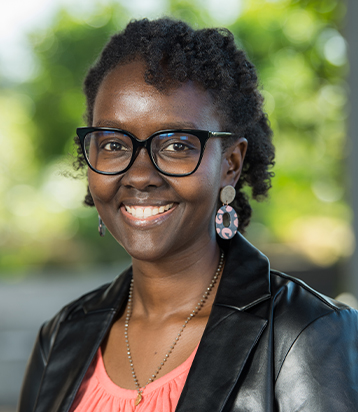
Dr. Lynn Kirabo
Maria M. Klawe Assistant Professor of Climate and Computer Science
About
Prof. Kirabo adapts qualitative research methods to understand the lived experiences of research populations from diverse backgrounds (i.e., with a focus on the lived experiences of disabled people).
She obtained her Ph.D. and MS in Human-Computer Interaction from Carnegie Mellon University, an MS in Information Technology at Carnegie Mellon University Africa, and a Bachelor in Information Technology at Makerere University Kampala, Uganda. She has ten years of experience working as a Front-End Developer and Software Engineer in non-profits and clean energy.
Project: How have climate change interventions included disabled voices/perspectives/experiences?
The design and implementation of any equitable intervention begins when we accurately understand different stakeholder perspectives. This fact holds true for technological interventions and global phenomena like climate change. This project aims to understand how disabled populations intersect with/have intersected with different climate change interventions. We will be spending our time exploring academic literature and other media (books, movies, podcasts, etc). Our goal will be to read, listen, watch, and synthesize a diversity of evidence. We will document our findings using qualitative data analysis in a survey paper and release our corpus open to the community.
Who Should Apply?
Students who are curious and interested in this domain space. Skills that are nice to have for this project include reading academic literature, clearly synthesizing highlights, using qualitative data analysis, and organizing data well. If this project excites you and you haven’t had past experience collaborating on a survey paper, then the skill that is a must-have is an enthusiasm to learn the above skills.
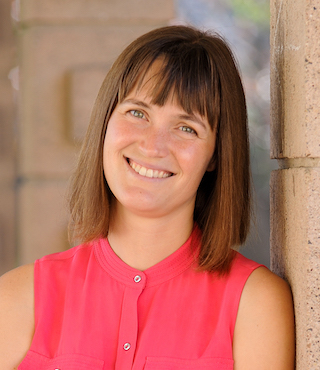
Dr. Julie Medero
Associate Professor of Computer Science
Co-Mentor: Dr. Lelia Hawkins, Professor of Chemistry and Hixon Professor of Climate
Project: Low-Cost Air Quality Sensor Networks
Atmospheric aerosols contribute to a variety of health concerns, including cardiovascular and respiratory conditions. In California, as in other places, that health burden falls largely on low-income communities of color. Funding is available to help qualifying communities improve their air quality, but the measurements needed to demonstrate a community’s ambient air quality has traditionally required expensive research-grade equipment. More recently, low cost sensors have provided a promising avenue for generating more spatially resolved air quality data, and advances in data processing offer hope that intelligent systems might be able to extract high-quality signals from noisy signals. This project will expand on existing work at Harvey Mudd to better understand and characterize the limits of those low cost sensors in a variety of conditions through field data collection and analysis.
Who Should Apply?
We encourage applicants who have an interest in applying their computing skills to community-facing projects. Applicants should have an interest in learning about the chemistry of aerosol particulate matter. Students will have the opportunity to build low cost sensors, and to analyze data that has both spatial and temporal attributes, so experience with, or interest in learning, skills like 3d printing, soldering, and mapping tools like ArcGIS is preferred.
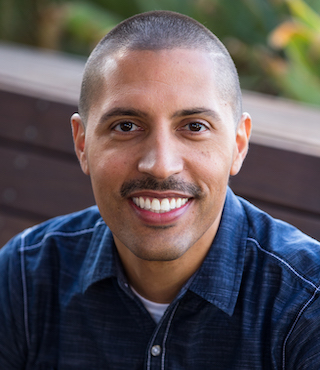
Dr. George Montañez
Associate Professor of Computer Science
About
George Montañez is an assistant professor of computer science at Harvey Mudd College. He obtained his PhD in machine learning from Carnegie Mellon University, an MS in computer science from Baylor University, and a BS in computer science from the University of California-Riverside. Prof. George previously worked in industry as a data scientist (Microsoft AI+R), software engineer (Prestige Software), and web developer (360 Hubs, Inc.). His current research explores why machine learning works from a search and dependence perspective, and identifies information constraints on general search processes. He is the director of the AMISTAD Lab.
Project: Explorations in ML and Randomized Search Systems
Casting machine learning as a form of randomized search, we explore the properties of search methods and what makes them successful. How does bias play a role in search? What information resources are necessary for probable success? How can information-theoretic aspects of artificial learning help us distinguish intentional from unintentional artifacts? We will explore questions like this and prove mathematical theorems and run simulations to gain insight into their answers.
Who Should Apply?
Anyone with a curious mind, the ability to concentrate on difficult problems for extended periods of time, and who would like to get better at formal mathematical proof.
Helpful Links
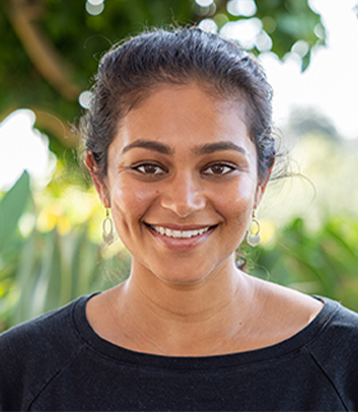
Dr. Arthi Padmanabhan
Assistant Professor of Computer Science
About
Arthi Padmanabhan is an assistant professor of computer science at Harvey Mudd College. Her research focuses on building systems that enable efficient computation, such as machine learning, on resource-constrained devices. Specifically, the systems she builds target an improved tradeoff between performance (e.g., accuracy, latency) and resource usage (e.g., cost, memory, energy, bandwidth consumption) in video analytics systems. She obtained her PhD in CS from UCLA. Prior to UCLA, she worked at Microsoft for three years and before that, she completed her BA in CS from Pomona College.
Project: Optimizing Powerful Computation for Low-Power Devices
Improved network communication has led to incredible innovations, such as the ability of many computers to communicate while performing a shared computation. In cloud datacenters, powerful machines work together to run complex computations, such as training large language models. On the other end of the spectrum, small low-power devices connect wirelessly to each other and perform simpler computations. This project will focus on such small devices and how to optimize their shared computation for tasks such as running neural networks. In particular, we look at making these computations more energy efficient, as it’s easy for them to run out of energy when under a heavy compute load.
Who Should Apply?
Anyone who is excited about the idea of performing tasks in a more efficient way (e.g., we achieved the same thing using less energy!) or handling how devices communicate with each other to achieve a shared goal. Having taken a systems course is a plus but not required.
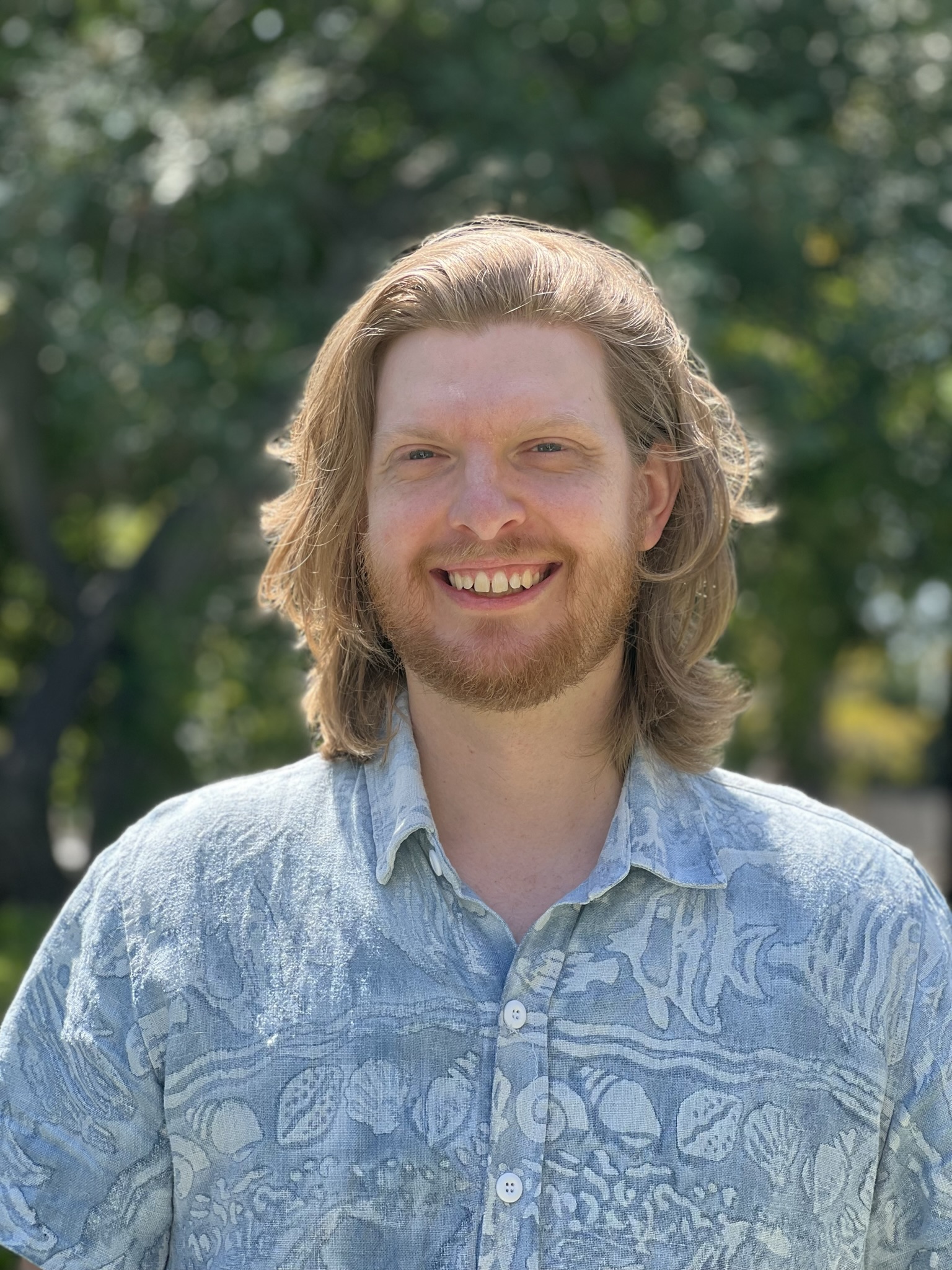
Dr. Calden Wloka
Assistant Professor of Computer Science
About
Calden Wloka is an Assistant Professor of Computer Science at Harvey Mudd College where he runs the Laboratory for Cognition and Attention in Time and Space (Lab for CATS). His research focuses on visual cognition, both from the perspective of computer vision through the design and evaluation of computational vision models, and from the perspective of biological vision through psychophysics and eye tracking experiments to further our understanding of human vision. Calden completed his PhD in 2019 at York University advised by John Tsotsos.
Project: Attention and Feature Representation in Spatiotemporal Networks
Over the past decade, deep learning has become the predominant approach to computer vision problems. While deep neural networks have demonstrated highly impressive results in many areas, they still sometimes exhibit surprising brittleness. Often this brittleness appears to result from networks relying on unintended patterns and correlations in the training data, or optimizing over easier to learn but less reliable parts of the visual signal (e.g. Geirhos et al., 2019) demonstrated that deep networks tend to rely more heavily on local image texture rather than shape). Understanding behavior in spatiotemporal processing is less well explored, however, with preliminary work recently pointing at a potential overreliance on static features (Kowal et al., 2022). Our work takes advantage of techniques developed to visualize the activity of deep networks in order to better understand what visual information is driving the network’s behavior (e.g. Selvaraju et al., 2017) in order to characterize and quantify how deep networks operating on videos rely on visual information to make their decisions. The specific aims of our work address two complementary threads: identifying which activity visualization techniques provide more useful and reliable insight into network behavior, and using these insights to develop novel training and data augmentation techniques to guide deep neural networks to more robust spatiotemporal representations.
Who Should Apply?
We encourage students who are motivated by understanding the behavior and limits of current approaches to computer vision, and thinking hard about ways to explore and quantify those aspects of vision models. Students will be joining an ongoing project with an established code base, so experience using Python and git is a major asset. Furthermore, familiarity with computer vision or video processing, and deep learning (PyTorch in particular) will be beneficial.